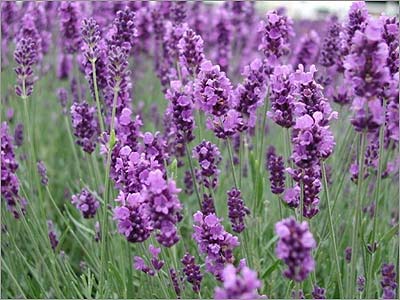
Lavender is an herb rich in history and culture. Long prized for its scent and healing properties, it is also one of the most beloved plants in the garden. Ranging in colors from vivid sun-soaked indigo to a subtle violet-white; it evokes within all who encounter this plant a sense of calming and rest through its wonderful heady and unmistakable aroma. Lavender is rich in aromatic molecules called esters, which are antispasmodic, pacifying and tonic, while other molecules give it its antiviral, bacterial and anti-inflammatory powers. One of the most consistent of the many therapeutic attributes of Lavender oil is respiratory relief. Hood River Lavender's Certified Organic Lavender oil is of particular benefit to respiratory relief. 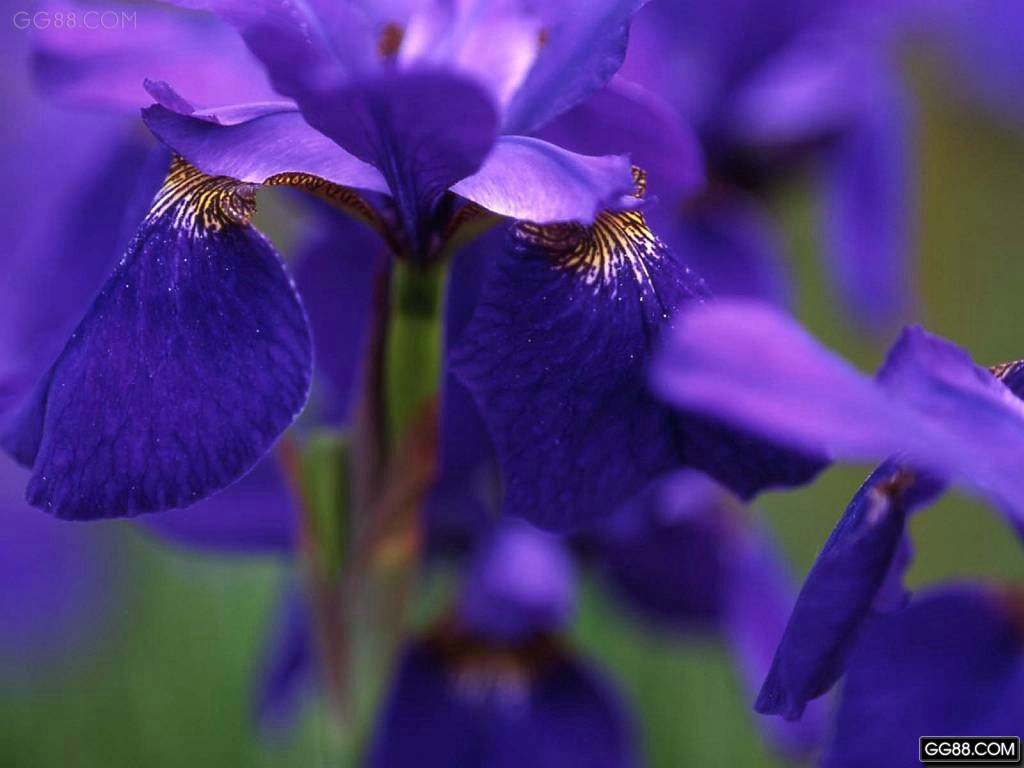
With its magnificent hues and beguiling aromatic perfume, Lavender has had its place in the hearts of men and women almost since the beginning of time. In ancient Rome lavender was recognized for its healing and antiseptic qualities, its ability to deter insects, and for washing. The name of lavender comes from the Latin word ‘lavare’ meaning ‘to wash’, and was used as a ritual bathing herb in ancient Rome.
Biblical references and folklore have mingled together over the years, and it was believed that Adam and Eve took lavender with them when they were banished from the Garden of Eden. As that legend goes, lavender later received its perfume distinction when Mary laid the baby Jesus’ clothes upon a bush of it to dry. Lavender was later regarded to ward off evil and in Medieval times a cross made of lavender hung over the door provided a safeguard against disease and evil in general.
During the 17th century in London, it was suggested that a bunch of lavender be tied around the wrist to protect one from the Great Plague. To the credit of our ancestors, lavender really did provide a protection from evil in that it did appear to guard against disease.
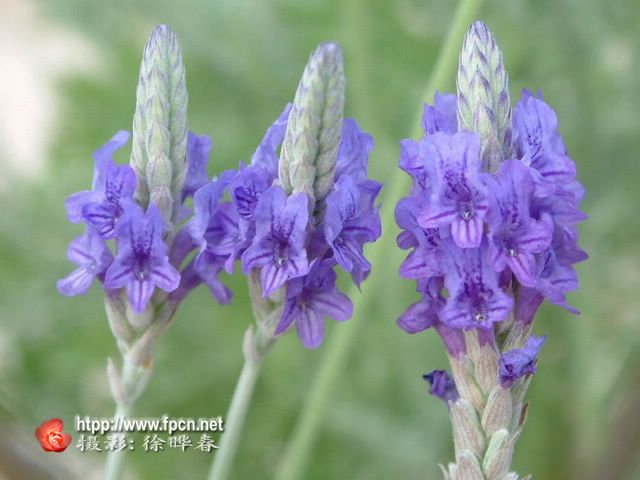
lavender薰衣草,英文名“lavender"
薰衣草是一種馥郁的紫藍色的小花,原产于地中海一带,其中以法国南部的普羅旺斯最为著名。因其美丽芳香的花穗和浪漫的色彩,被誉为“宁静的香水植物”。薰衣草的香气浓郁,另人感到安宁镇静,具有洁净身心的功效,古罗马人就常用它来沐浴薰香。
薰衣草性喜乾燥,花形如小麥穗狀,有著細長的莖幹,
花上覆蓋著星形細毛,末梢上開著小小的紫藍色花朵,窄長的葉片呈
灰綠色,成株時高可達80公分,通常在六月開花。每當花開風吹起
時,一整片的薰衣草田宛如深紫色的波浪層層疊疊地上下起伏著,剎
是美麗。
在中古時期,因薰衣草本身具有殺蟲效果,人們通常把用薰衣草作成
香包放在櫥櫃中,來驅蟲;而羅馬人則因其具有抗菌力,因此常用薰
衣草來泡澡和清潔傷口;在世界大戰抗生素缺乏時,曾經用薰衣草來
抗發炎。近幾年來,由於其顯著的療效、美麗的色彩及迷人的香味,
因而走出「傳統藥草」,進而更是成為流行的『芳香(aromatheraphy)
療法』主要原料之一。由薰衣草提煉出來的芳香精油是所有芳香精油
中治療用途最廣的一種。
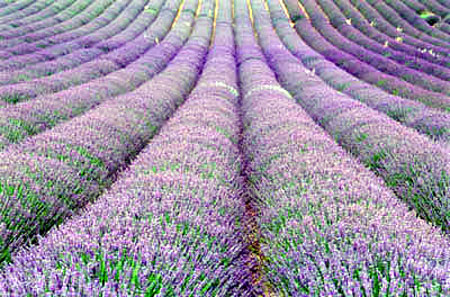
Over time lavender has been associated with love. In Tudor times, if a maiden wanted to know the identity of her true love, she would sip a brew of lavender on St. Luke’s day while murmuring: “St. Luke, St. Luke, be kind to me, In my dreams, let my true love see me”. Alpine girls tucked lavender under the pillows of their lovers in hopes of turning their thoughts toward love and romance. Once married, newlyweds would put bunches of lavender under their mattress to ensure that marital passion.
薰衣草的爱情传说
紫蓝的薰衣草,往往与浪漫的爱情是分不开的。当您与恋人置身在薰衣草田中,风吹起时,大自然暖紫色的海浪,一种唯美的蛊惑,好像时间都为你们停顿了。法国的普罗旺斯与日本北海道的富良野亦是因此而永远美丽,永远是浪漫电影的拍摄场景。
有关薰衣草的爱情故事很多,不过很奇怪,许多时候这些故事都是与魔鬼或是与神圣有关,可能是薰衣草从古便被认为是具有神力的一种神圣药草。欧洲中古时就有这麼一个传说:一个美丽的村女见一位风度翩翩的英俊绅士,连续好几天和他幽会,甚至还跟他约定要一起私奔。不过,在他们约定要私奔的前一天,村女突然对绅士的身份起疑,於是偷偷带了一把薰衣草在身上。第二天,当绅士出现要带她远走高飞之际,村女偷偷拿出薰衣草花束,投掷在她的爱人身上 - 结果发现,原来绅士竟是可怕的魔鬼所而成的! 露出原形的魔鬼又惊又怒,但又害怕薰衣草的神圣力量,只好逃之夭夭。 由此可见薰衣草不一定是催情良方呀!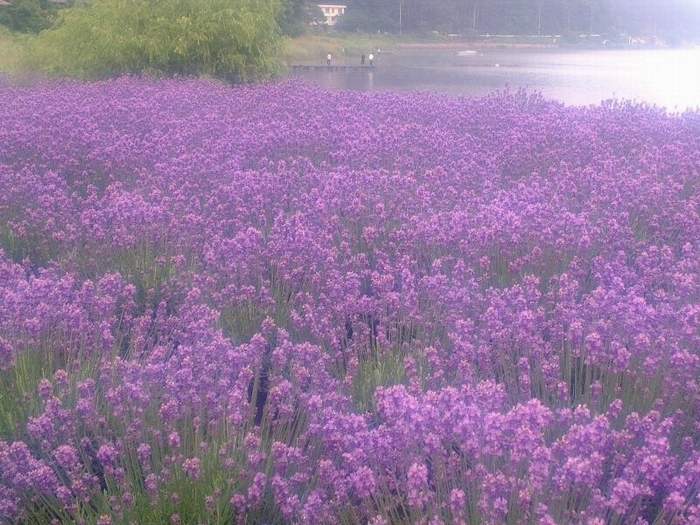
在葡萄牙,对女人应特别有礼貌,这是一种社会风尚,故不可忽视。薰衣草是葡萄牙的国花。葡萄牙人民十分喜欢薰衣草,这是因为它不但有观赏价值,而且有较高的经济价值,它是制造香皂、卫生皂、花露水、清凉油、洗发乳液、冷霜的重要原料。
薰衣草花语--等待爱情












